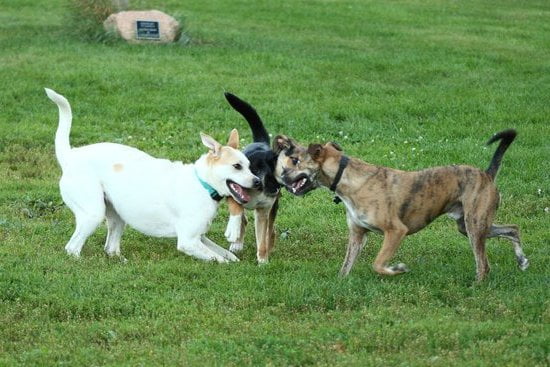Teaching your dog to drop things is an essential aspect of obedience training and can be a life-saving command in certain situations. Whether your dog tends to pick up items they shouldn’t have or has a possessive streak, learning how to train a dog to drop things is crucial for their safety and the safety of those around them.
Choosing the right training method for your dog’s personality is key to successfully teaching them the drop it command. Just as every dog has its own unique personality, different dogs respond better to different training techniques. By understanding your dog’s temperament and characteristics, you can tailor your training approach to effectively teach them to drop items on command.
In this article, we will delve into the basics of teaching your dog the drop it command, utilizing positive reinforcement to encourage good behavior, addressing common challenges in training, and incorporating everyday objects into training sessions. We will also explore advanced techniques for more reliable results and troubleshooting common issues that may arise during training.
By the end of this article, you will have a comprehensive understanding of how to train a dog to drop things and reap the long-term benefits of a well-trained canine companion.
Choosing the Right Training Method for Your Dog’s Personality
When it comes to teaching your dog to drop things, it’s essential to choose the right training method for your dog’s personality. Every dog is unique, with different temperaments and learning styles. Finding the approach that works best for your furry friend will not only make the training process more effective but also more enjoyable for both of you.
Understanding Your Dog’s Personality
Before starting the training process, take some time to observe and understand your dog’s personality. Is your dog easily motivated by treats or toys? Does he have a high energy level or a more laid-back attitude? Understanding these traits will help you determine which training method will be most successful.
Positive Reinforcement vs. Clicker Training
Positive reinforcement is a popular and effective training method for teaching a dog to drop things. This approach involves rewarding your dog with treats, praise, or play when he performs the desired behavior.
On the other hand, clicker training uses a clicking sound to mark the desired behavior, followed by a reward. Both methods can be successful in teaching your dog to drop objects, so it’s important to consider which one aligns best with your dog’s personality and learning style.
Customizing Your Approach
It’s essential to tailor your training approach based on what motivates and engages your dog. Some dogs may respond better to positive reinforcement with treats, while others may thrive with clicker training. Pay attention to your dog’s responses during training sessions and adjust your methods accordingly for the best results on how to train a dog to drop things.
The Basics
Teaching your dog the “drop it” command is an essential skill that can keep them safe and well-behaved in various situations. Whether it’s preventing them from chewing on something dangerous or letting go of a treasured toy, this command is crucial for their obedience and safety. In this section, we will explore the basic steps to teaching your dog the “drop it” command.
Introducing the Command
Begin by introducing the command “drop it” to your dog in a calm and positive manner. Hold a treat in your hand and let your dog take hold of it. Once they have a good grip on the treat, say “drop it” and offer another treat as a reward for releasing the first one. Repeat this process several times until your dog starts to understand the connection between the command and releasing objects.
Practice Makes Perfect
Consistent practice is key in reinforcing the “drop it” command. Use their favorite toys or items they tend to pick up during walks as training tools. When they grab something they shouldn’t have, calmly give the command and offer a treat as soon as they release it. Over time, they will learn that obeying the “drop it” command results in positive reinforcement.
Building Distractions
As your dog becomes more proficient at dropping objects during training sessions, gradually introduce distractions to mimic real-life situations. This could include practicing in different environments, around other people or pets, or with increasingly tempting objects. By gradually adding distractions, you are helping your dog generalize the behavior of dropping things across different scenarios.
By understanding these basics and being patient with consistent training, you can effectively teach your dog to drop things on command. Remember that every dog learns at their own pace, so be patient and celebrate their progress along the way.
Using Positive Reinforcement to Encourage Good Behavior
Teaching a dog to drop things is an essential skill for pet owners, as it can help prevent dangerous situations and promote good behavior. Using positive reinforcement is a powerful way to encourage your dog to exhibit the desired behavior of dropping items on command.
Positive reinforcement involves rewarding your dog with treats, praise, or playtime when they obey a command or exhibit the desired behavior. Here are some effective ways to use positive reinforcement in training your dog to drop things:
- Consistent Rewards: When your dog drops an item upon command, immediately reward them with a treat or verbal praise. This will help reinforce the behavior and make them more likely to repeat it in the future.
- Use High-Value Rewards: Offer your dog high-value treats or toys as a reward for dropping items. These rewards should be especially enticing for your dog, making them more motivated to comply with the drop it command.
- Gradually Reduce Treats: As your dog becomes more consistent in obeying the drop it command, gradually reduce the frequency of treats while still offering verbal praise and occasional rewards. This will help maintain the desired behavior without relying solely on food rewards.
By utilizing positive reinforcement techniques consistently and effectively, you can encourage good behavior in your dog and reinforce their understanding of the drop it command.
Additionally, it’s important to remember that every dog is unique and may respond differently to various training methods. It’s crucial to be patient and consistent with your training approach, taking into account your dog’s individual personality traits and preferences. To enhance learning success, observe how your pet responds best – whether through playtime, affectionate patting, or small edible treats – and establish which option is most suitable for their needs.
Addressing Common Challenges in Teaching Your Dog to Drop Things
Teaching your dog to drop things is an important skill that can prevent potentially dangerous situations, such as your dog picking up and swallowing something harmful. However, it can also be a challenging behavior to train. Here are some common challenges you might encounter when teaching your dog to drop things and how to address them.
One common challenge is getting your dog to release an item that they find particularly interesting or valuable. To address this, it’s important to make sure you have high-value treats or toys that are even more appealing than the item they are holding onto. This will encourage them to willingly let go of the object in exchange for something better.
Another challenge is teaching your dog to generalize the “drop it” command across different settings and with various objects. To help with this, practice the “drop it” command in different environments and with a variety of items. Start in a quiet, familiar setting and gradually introduce distractions and new objects as your dog becomes more reliable with the command.
Additionally, some dogs may exhibit possessive behavior when it comes to certain items, making them reluctant to drop them. In this case, it’s crucial to work on building trust and establishing leadership through positive reinforcement training techniques. Building a strong bond based on trust will make your dog feel more comfortable relinquishing items when asked.
| Common Challenges | How to Address Them |
|---|---|
| Reluctance to release valuable items | Use high-value treats or toys as an incentive |
| Difficulty generalizing the command | Practice in different environments with various items |
| Possessive behavior towards certain objects | Build trust and leadership through positive reinforcement training |
Incorporating Everyday Objects Into Training Sessions
When teaching your dog to drop things, it’s important to incorporate everyday objects into training sessions. This helps your dog generalize the behavior and understand that the “drop it” command applies to a variety of items. Here are some ways to incorporate everyday objects into your training sessions:
1. Start with familiar items: Begin by using objects that your dog is already familiar with, such as their favorite toys or a ball. This will make it easier for them to understand the concept of dropping an item on command.
2. Gradually introduce new items: Once your dog has mastered dropping familiar objects, gradually introduce new items into the training sessions. This could include household items like shoes, remote controls, or even food items (in a controlled environment).
3. Practice in different environments: Dogs learn best when they can generalize commands across different environments. As you progress in training, practice the “drop it” command in various settings such as indoors, outdoors, at the park, or during walks.
By incorporating everyday objects into your training sessions, you can help your dog understand the “drop it” command in various contexts and ensure that they can reliably respond to the cue regardless of the item or environment.
Taking Training to the Next Level
When training your dog to drop things, it is important to take the training to the next level by adding distractions and challenges. This will ensure that your dog can follow through with the drop it command even in difficult situations. By introducing distractions and challenges during training, you are preparing your dog to respond appropriately in real-life scenarios.
One effective way to add distractions and challenges is by training your dog in different environments. Start with a familiar place such as your backyard, then gradually move to more distracting places like the park or a busy street. This will help your dog generalize the drop it command and understand that it applies in various settings.
Another way to add distractions is by introducing other people and animals during training sessions. Have a friend or family member walk by while you are practicing the drop it command, or bring another pet into the mix. This will teach your dog to focus on you and follow commands even when there are other stimuli present.
Adding challenges can also involve using different objects for your dog to drop. Start with their favorite toy, then switch it up with items they are less inclined to let go of. This will test their understanding of the command and reinforce their ability to comply regardless of what item they are holding onto.
| Training Environment | Distractions Added |
|---|---|
| Familiar backyard | Introduce people walking by |
| Local park | Add other dogs into the mix |
| Busy street | Incorporate loud noises such as traffic or sirens |
Advanced Techniques for Training a Reliable Drop It Command
Training your dog to reliably drop things on command is an advanced skill that requires patience and consistency. Once your dog has mastered the basics of the “drop it” command, you can start implementing advanced techniques to ensure that they respond to the cue in a variety of situations.
One advanced technique for training a reliable drop it command is to introduce distractions during training sessions. Start by practicing the command in a quiet, controlled environment, and then gradually add distractions such as other pets, toys, or food. This will teach your dog to focus and listen to your command even when there are competing stimuli present.
Another technique is to incorporate training into everyday activities. For example, when playing with your dog, use the drop it command when they pick up a toy. By integrating training into daily routines, you can reinforce the behavior in real-life scenarios and help your dog understand that the command applies at all times.
Finally, consider adding challenges to the training process. This could involve hiding treats or toys and using the drop it command for retrieval. You can also practice the command within different environments such as outdoors or in public spaces. This will help solidify your dog’s understanding of the command across various contexts.
By utilizing these advanced techniques, you can ensure that your dog responds reliably to the drop it command in any situation, reinforcing good behavior and strengthening your bond with your furry companion.
Troubleshooting and Troubleshooting Common Issues in Training Your Dog to Drop Things
Training a dog to drop things can be a challenging task, and it is common for dog owners to encounter various issues during the training process. One common issue is when a dog becomes possessive of the item they have picked up and refuses to let go. This behavior can be frustrating but with patience and consistent training, it can be addressed effectively.
One way to troubleshoot this issue is by using positive reinforcement techniques. When your dog picks up an item and refuses to drop it, avoid trying to forcefully take the item away as this can reinforce their possessive behavior. Instead, offer them a high-value treat in exchange for the item. This will teach your dog that dropping the item results in a reward, making it more likely for them to comply with the “drop it” command in the future.
Another common issue in training dogs to drop things is when they become easily distracted during training sessions. This can make it difficult for them to focus on learning the “drop it” command. To address this, consider incorporating everyday objects into your training sessions. By practicing in different environments and with varying distractions, you can help your dog generalize the behavior of dropping items regardless of the situation.
Additionally, when troubleshooting issues in training your dog to drop things, consider seeking professional help from a certified dog trainer or behaviorist if you encounter persistent challenges. They can provide personalized guidance and support based on your dog’s specific needs and personality traits. Remember that every dog is different, so what works for one may not work for another. With patience, consistency, and positive reinforcement, you can successfully train your dog to reliably drop items on command.
The Long-Term Benefits of Teaching Your Dog to Drop Things and Follow Through With Commands
In conclusion, teaching your dog to drop things and follow through with commands is a crucial aspect of their training and development. By understanding the importance of this skill, you can ensure that your dog is well-behaved, safe, and able to better communicate with you. It not only helps in managing their behavior but also enhances their bond with you as their owner.
Choosing the right training method for your dog’s personality is essential in successfully teaching them to drop objects on command. Whether it’s using positive reinforcement or incorporating everyday objects into training sessions, understanding what works best for your dog will make the process more effective and enjoyable for both of you.
By addressing common challenges in teaching your dog to drop things and gradually incorporating distractions and challenges, you can take their training to the next level. To ensure reliable results, advanced techniques and troubleshooting any common issues that arise will further solidify their ability to follow through with commands.
Ultimately, the long-term benefits of teaching your dog this skill will result in a well-behaved and obedient companion that you can trust in various situations. So, by following these guidelines on how to train a dog to drop things, you can set both yourself and your furry friend up for success.
Frequently Asked Questions
How Do You Teach a Dog to Drop Something?
Teaching a dog to drop something begins with using positive reinforcement. Start by offering a treat in exchange for the item, saying “drop it” as you do so. Once the dog releases the item, reward them with the treat and verbal praise.
What Is the Drop Command for a Dog?
The drop command for a dog is typically taught using a specific verbal cue, such as “drop it” or “release.” This cue should be consistently used during training sessions when asking the dog to let go of an item they have in their mouth.
What to Do When Dog Doesn T Drop It?
If a dog doesn’t drop an item when commanded, it’s important not to get angry or respond harshly. Instead, try offering an even higher value treat to entice them to release the object willingly. It may also be helpful to work on strengthening basic obedience skills and training in a more controlled environment to reinforce the desired behavior.

Welcome to the blog! I am a professional dog trainer and have been working with dogs for many years. In this blog, I will be discussing various topics related to dog training, including tips, tricks, and advice. I hope you find this information helpful and informative. Thanks for reading!





